1985 BMW E30 325
The three-series was introduced as a replacement for the popular BMW 2002. The first three-series, internally referred to as the E21, rolled off the production line on May 2, 1975 and was an instant success. The first year, 1985 BMW E30 325 worldwide production of vehicles neared 221,300, an increase of almost 37,000 vehicles from the prior year. In 1977 the three-series was available for sale in the United States, bringing production even higher.The 1985 BMW E30 325 borrowed many of the style cues from the BMW 2002 such as the distinctive forward-leaning grille. Both were two-door sedans but the 320i had a slightly wider stance and was 1.5 inches longer. Disc brakes were placed on the front while the rear had drums. The 1985 BMW E30 325 suspension was MacPherson struts in the front and trailing arm in the back. Under the hood sat a 2.0-liter Bosch K-Jetronic fuel-injected inline four capable of producing 110 horsepower. The Getrag four-speed manual gearbox was standard but a ZF three-speed automatic was optional.
1985 BMW E30 325
In 1980, the engine decreased in size to 1.8 liters. To cope with emission regulations, a three-way catalyst was adapted to the vehicle; however, this reduced the horsepower rating to 100. At the close of 1983 the E21 production ceased to make room for the next-generation 3-series, the E30. The 1985 BMW E30 325 brought with it many improvements in styling and mechanical features, but it also cost nearly twice as much as the vehicle it replaced. To make the most of aerodynamics, the grille became less angled and the hood sloped slowly from the front of the vehicle to the windshield. The wheelbase and length were nearly identical to its predecessor. The 1985 BMW E30 325 engine was the 1.8-liter fuel-injected four cylinder producing 101 horsepower.
1985 BMW E30 325 The 318i was a two-door sedan introduced in 1984. The 325e quickly followed bringing with it a 2.7-liter inline six-cylinder engine borrowed from the 528e. With 121 horsepower the vehicle could accelerate from zero to sixty in just under nine seconds and reach the quarter-mile in 16.6 seconds. The vehicle was sporty but it was tailored to the economic conditions at the time. The 1985 BMW E30 325 oil embargo and surging gas prices made the three-series an excellent option. With their potent engines and fuel-efficient gearing, the vehicles were able to comply with the concerns of many motorists. Four-doors and four-speed automatic transmission options were offered on the three series in 1985. Sales for the 318i were dwindling so the decision was made to remove it from the line-up at the close of 1986. 1986 also saw the addition of antilock four-wheel disc brakes and the two-door 325es.
1985 BMW E30 325
1987 was a big year for the three-series with the addition of the 325i and 325is models, and a convertible option dubbed the 325ic. The 325is was a true sports model bringing back a heritage that had been last seen in the 2002ti. With 168 horsepower and nearly identical torque, it was the most powerful three-series up to that point. The 1985 BMW E30 325 zero-to-sixty mile-per-hour mark was achieved in just 7.4 seconds and the quarter mile in 15.6 seconds. With the large disc brakes on all four corners and sturdy suspension, the performance was amazing.In 1988 safety and performance were taken to a whole new level with the introduction of the all-wheel-drive 325ix. By the close of 1991 a replacement for the 3 Series E30 was needed. The 1985 BMW E30 325 had expanded the model lineup to include sedans, coupes, and convertibles with varying engine and transmission options. Replacing the 1985 BMW E30 325 would be tricky, since the company relied upon it for their 'bread-and-butter'.
1985 BMW E30 325
The replacement came in the form of the 1992 three-series E36. The E36 was the first major departure from the design, styling, and proportions of the BMW 2002. When comparing the E36 with the 1985 BMW E30 325, it was larger, wider, and slightly bigger in every dimension. The windshield was slightly slanted, rather than the straight-up design of the previous models. The aerodynamics further improved and as a side-benefit, reduced road and wind noise. With the increase in vehicle size, the interior room increased for passengers and the engine compartment could accommodate larger engines. The weight distribution was 50/50, a technique that improves a vehicle performance and handling. The 1985 BMW E30 325 front suspension was still MacPherson strut design but the rear suspension received a new 'Z-axle' featuring a multilink system. The rack-and-pinion steering, disc brakes and ABS were carried over from the E30. Under the hood lurked a new 24-valve dual-overhead-cam aluminum six-cylinder engine capable of producing 189 horsepower. When equipped with a five-speed transmission, the 325i could propel from zero-to-sixty in 6.9 seconds.
1985 BMW E30 325
In 1996 the 325i and 325is received a new 2.8-liter inline six rated at 190 horsepower. In 1998 the 323i convertible and 323is coupe was outfitted with a 2.5-liter M52 engine that produced 168 horsepower. In 1999 the E46 3-series was introduced. The 1985 BMW E30 325 first versions offered were the 323i and 328i four-door sedans. The body had undergone moderate changes such as a new front end, a rounder roofline, wider wheel arches, and updated headlights. The vehicles sat atop a wider wheelbase and the length had increased. BMW stated that the structure of the body had been stiffened by 70 percent and the engine moved back in the chassis to take advantage of better weight distribution. Aluminum had been used in many components such as the suspension and engine to reduce the overall weight. The six-cylinder engine was equipped with an advanced VANOS variable valve timing system. The 2.5-liter version produced 170 horsepower while the 2.8-liter produced 193 horsepower. The 1985 BMW E30 325 rear-seats in the E46 were roomier and side-curtain airbags greatly improved the safety for all passengers.
1985 BMW E30 325
In 2000 the 323ci and 328ci versions were added to the model lineup. A 323i wagon was big news, the first time a wagon had been offered as a three-series in the United States.In 2003 a DVD-based navigation became available as optional equipment. It provided many new and exciting features, critics, however, gave it poor ratings on being user-friendly. The 1985 BMW E30 325 vehicles became more comfortable and accommodating with a front, center arm-rest for the 325 and a center headrest for all wagons and sedans.
1985 BMW E30 325
The BMW Motorsport department was tasked with designing and building a powerful, lightweight derivative of the three series. The purpose of the M3 was to compete in the FIA Group A racing. Over five-thousand examples were hand-built by BMW Motorsport. The first series 1985 BMW E30 325 was based on the E30 platform and was introduced to Europe in 1986 and the United States a year later. The first series stayed into production until 1990 and offered with a variety of motors, including a 238 horsepower engine. In a short amount of time, the 1985 BMW E30 325 scored thousands of victories making it one of the most successful touring machine in history. Under the hood of the M3 lurked a 2.3-liter four-cylinder engine with twin-cam four-valve head with Bosch fuel-injection and rated at 192 horsepower. The 2850 pound vehicle with five-speed manual transmission could go from zero-to-sixty mph in less than seven seconds. The top speed was 140 miles-per-hour.
1985 BMW E30 325
In 1992 the second generation M3, based on the E36 platform, was introduced at the Paris Auto Show. BMW Motorsports started with the M50TU engine used in various E36 and E34. The bore and stroke was enlarged and the intake was modified to include individual throttle bodies. A new variable valve timing system on the intake camshaft, called VANOS, was adapted to the engine. The 1985 BMW E30 325 engine, dubbed the S50, was capable of producing over 280 horsepower. The Motorsport department continued the modifications by adapting a new suspension with firmer shocks and springs and larger anti-roll bars. Twelve-inch vented disc brakes provided excellent stopping power, while the M-tuned variable-ratio steering provided instantaneous response.
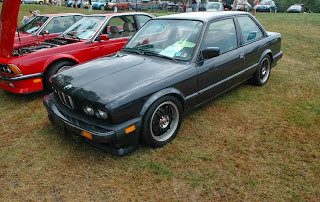
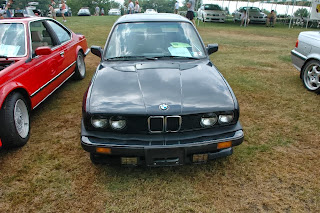


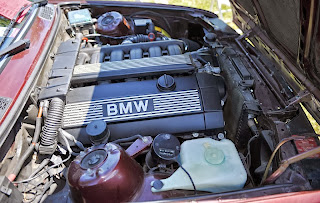

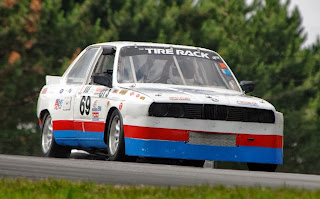
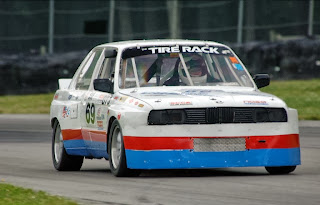

Няма коментари:
Публикуване на коментар